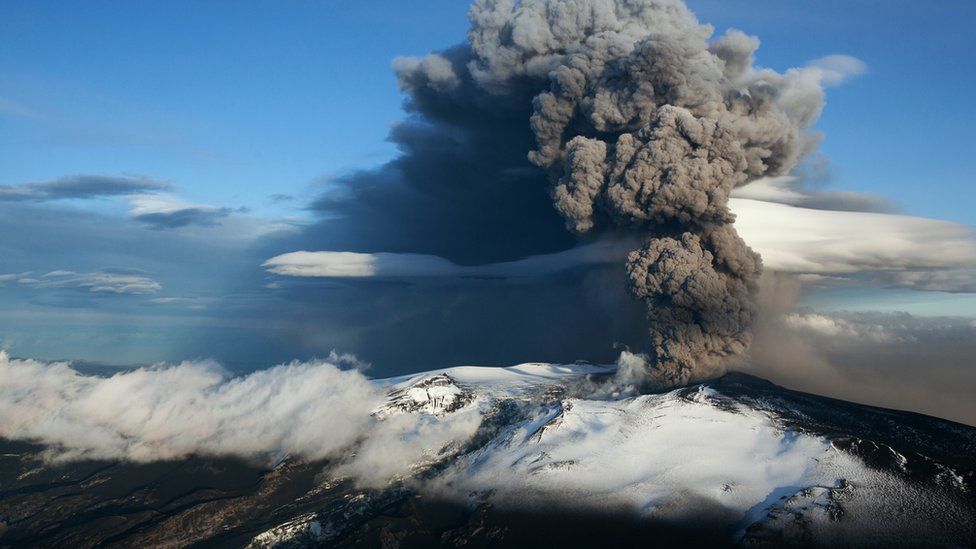ARTICLE AD BOX
 Image source, Getty Images
Image source, Getty Images
The 2010 Eyjafjallajökull eruption in 2010 caused widespread disruption to air travel
By Pallab Ghosh
Science correspondent
The Reykjanes eruption is unlikely to lead to the same disruption caused by the Eyjafjallajökull volcano in 2010.
The earlier blast led to ash particles being sprayed up into the atmosphere and spread across Western Europe.
The incident grounded planes for several weeks because of concerns that the particles would damage jet engines, making air travel unsafe.
This won't happen now. The 2010 eruption occurred under a glacier, which is not the case this time.
Prof Matthew Watson, Professor of Volcanoes and Climate at the University of Bristol, said "it is unlikely, but not impossible'' that there may be some impact on air travel.
''This type of eruption doesn't generally produce much ash, which is what tends to ground planes,'' he said.
The Eyjafjallajökull blast led to large amounts of water interacting with molten rock causing an explosive interaction - like water being put into a chip pan, but immensely more powerful.
The explosions of 2010 led to the molten rock being turned into ash and glassy particles, which scientists feared would damage jet engines. The issue was compounded by the fact that the ash cloud flew straight into the part of an air current known as the jet stream that spread it across western Europe.
The dangers posed by the eruption on Iceland's Reykjanes peninsula are local, according to volcanologist Dr Sam Mitchell of Bristol University.
"It is completely valid for people to think back to 2010 and the impact caused across Europe, especially to air travel," he said.
"The difference this time is that the volcano is not erupting explosively with water. So people should not worry about the airspace over Europe because the current eruption is nothing like what happened with Eyjafjallajökull."
Dr Mitchell said that the greatest risk to people living locally was from volcanic fumes which, although not dangerous, would be uncomfortable, especially to those with respiratory problems.
Dr Matt Genge, Senior Lecturer in Earth and Planetary Science at Imperial College London, said that it was unclear how the Reykjanes eruption would progress.
''The eruption rate at these fractures is large, at a hundred cubic metres of lava per second," he said. "The lava appears to be hot and fluid making the lava flows very mobile and dangerous to approach."
He said that whether the eruption posed a threat to the Blue Lagoon thermal tourist attraction and to the town of Grindavik depended very much on topography.
"Lava flows downhill until it cools sufficiently to stop, there is little that can be done to divert it," he said.
He said the eruption may continue to expand along the fissure, extending the area that the lava can envelope.
Follow Pallab on X, formally known as Twitter.

 1 year ago
124
1 year ago
124








 English (US) ·
English (US) ·